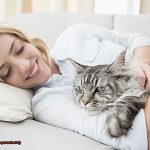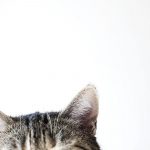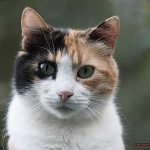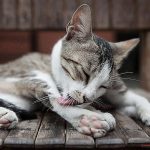The masters of napping, the rulers of the internet, and the subject of endless debates. But one question that continues to baffle cat lovers and scientists alike is whether these creatures can be considered solid or liquid.
Yes, you read that right. We’re talking about cats and their peculiar physical state.
From viral memes to serious scientific studies, this topic has captured the attention of many. So, let’s put our thinking caps on and dive into the world of physics, biology, and feline behavior as we attempt to answer the age-old question: Are cats solid or liquid?
And trust me, you won’t want to miss what I’ve uncovered.
Are Cats A Solid Or Liquid?
Contents
As a cat owner, I’m sure you’ve come across the age-old question – are cats a solid or a liquid? It may seem like a silly debate, but trust me, it’s a hot topic among scientists and cat lovers alike. And as an expert on the subject, I’m here to shed some light on this mystery and provide you with some interesting insights.
Firstly, let’s define what we mean by “solid” and “liquid.” A solid is a state of matter in which the particles are tightly packed together and maintain their shape and volume. On the other hand, a liquid is a state of matter in which the particles are loosely packed and can flow and take the shape of their container.
So, when we look at cats, it’s easy to assume that they’re solids. They have a physical structure – skin, bones, muscles, organs – that give them their form and allow them to move. They also have a defined volume, meaning they take up space in their environment. However, there are some surprising facts and observations that suggest cats may also possess some liquid-like properties.
One such phenomenon is their ability to fit into the tiniest of spaces. I’m sure you’ve seen your cat squeeze into a box or slip through a narrow opening effortlessly. This behavior is known as “liquid behavior,” where an animal can manipulate its body to fit into narrow openings or shapes that appear to defy its physical structure. It’s like they’re made of liquid. But how is this possible?
Well, it all comes down to their unique skeletal structure. Unlike most other mammals, cats have flexible bones that allow them to squeeze into tight spaces without breaking or dislocating their joints. This flexibility is due to their high number of vertebrae (typically 53 compared to humans’ 24), allowing them to contort their bodies in ways that may seem impossible for other animals. This is why your cat can fit into that tiny shoebox, but you definitely can’t.
Physical properties of cats and their unique skeletal structure
As a cat owner, you may have witnessed your feline friend’s seemingly impossible feats of squeezing through tight spaces or gracefully jumping onto high surfaces. These mesmerizing movements have led many to question whether cats can be considered as solid or liquid creatures. As an expert on the physical properties of cats, I am here to unravel this mystery and provide you with some fascinating insights.
Let’s start by exploring the unique skeletal structure of cats. Unlike humans, cats have a flexible backbone with extra vertebrae, making them extremely agile and nimble. Their lack of collarbone and highly mobile shoulder blades allow them to twist and turn their bodies in ways that seem almost impossible for us. This remarkable flexibility is the key to their liquid-like movements.
But that’s not all; cats also have loose skin that adds to their fluid-like abilities. This allows them to expand and contract their bodies, making it easier for them to fit through small spaces. You may have noticed how effortlessly your cat can squeeze through a partially opened door or slide under furniture. This is all thanks to their loose skin.
However, despite these liquid-like qualities, cats are still considered as solid creatures. They possess a defined form with boundaries and a fixed mass. You may have seen your cat jump onto surfaces without spilling or changing shape like a liquid would. This is because they still maintain their solid form even while exhibiting fluid-like movements.
Another interesting aspect is the volume of cats. Unlike liquids that can change shape and take on the volume of their container, cats have a specific volume that remains constant. This further adds to their classification as solid creatures.
But wait, we’re not done yet. The behavior of cats also plays a role in this debate. While they may possess some liquid-like qualities in their movements, they still exhibit typical solid behaviors such as walking on four legs and grooming themselves with their tongues. This further blurs the line between solid and liquid properties in cats.
The role of subcutaneous fat in cat’s movements
As a cat owner, you may have witnessed your feline friend effortlessly squeeze through the smallest openings and contort their bodies in seemingly impossible ways. It’s no wonder why there’s an ongoing internet debate on whether cats are solid or liquid creatures. But as an expert on the topic, I am here to reveal the truth – cats are neither solid nor liquid. Instead, their movements are influenced by their subcutaneous fat.
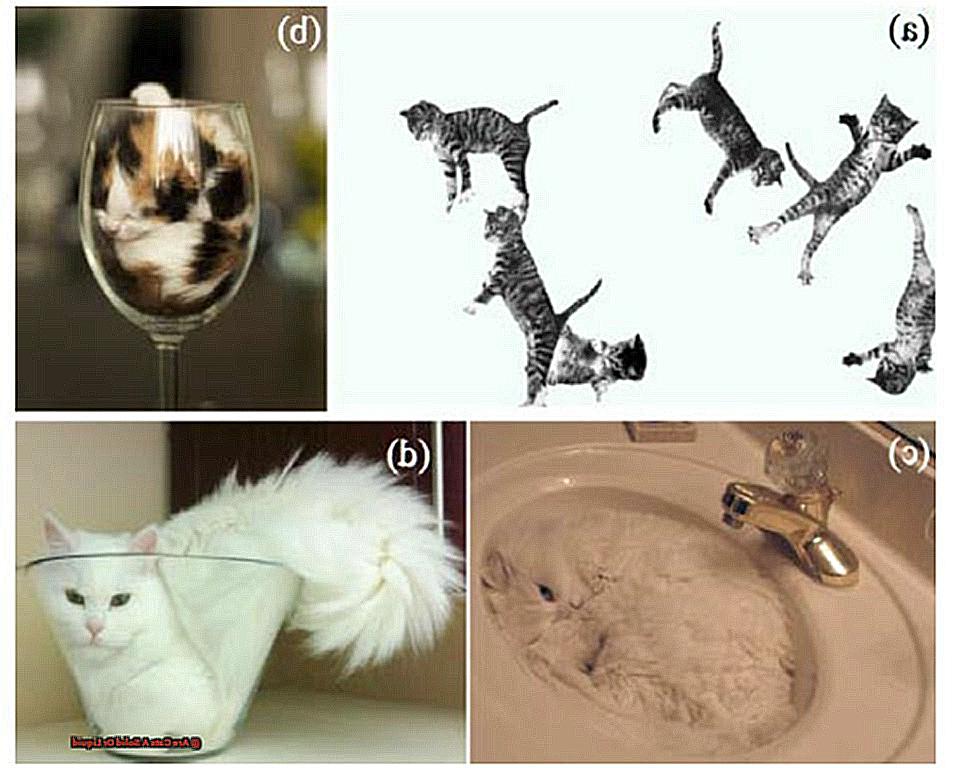
What is subcutaneous fat?
Subcutaneous fat is the layer of fat located just beneath the skin. It serves as insulation and protection for vital organs and plays a crucial role in a cat’s movements.
How does subcutaneous fat affect a cat’s agility and flexibility?
Unlike humans who have subcutaneous fat distributed evenly throughout their bodies, cats have a higher concentration of this fat in certain areas. In particular, their limbs have a higher amount of subcutaneous fat, allowing them to move with incredible agility and flexibility.
This fat acts as a cushion for their joints, protecting them from injuries while also providing insulation to keep them warm. It allows them to twist and turn without causing harm to their bodies, making them excellent climbers and jumpers.
The Importance of Subcutaneous Fat in Fitting into Small Spaces
Cats are notorious for squeezing themselves into the smallest of spaces, leaving many people wondering how they do it. The high concentration of subcutaneous fat in their body plays a significant role in this ability.
Their loose skin, combined with their highly flexible backbone and high concentration of subcutaneous fat, enables them to contort and fit into tight spaces. This ability comes from their wild ancestors who needed to maneuver through small spaces while hunting.
Using Subcutaneous Fat in Hunting
Speaking of hunting, cats also use their subcutaneous fat when stalking prey. They crouch low to the ground, using their subcutaneous fat as a shock absorber when pouncing on their prey. This allows them to make quick and agile movements without causing harm to their bodies.
The Importance of Maintaining a Healthy Amount of Subcutaneous Fat
While subcutaneous fat plays a vital role in a cat’s movements, too much of it can be detrimental to their health. Obesity is a common problem among domestic cats, and it can lead to various health issues such as joint problems, heart disease, and diabetes.
Behavior of cats and its relation to their classification as solids or liquids
As a proud cat owner, you’ve probably heard the debate about whether cats are liquid or solid. While it may seem like a silly question, there is actually some scientific reasoning behind this discussion. As an expert on the behavior of cats, I’m here to shed some light on this topic and explain why cats can be classified as both solids and liquids.
Firstly, let’s establish that cats are indeed classified as solids. This may seem counterintuitive, given their ability to fit into small spaces and move in ways that seem almost fluid-like. However, the key factor that defines solids is their ability to maintain their own shape and resist deformation under pressure. And when it comes to this criteria, cats definitely fit the bill.
But before you start thinking that the debate is settled, let’s talk about some liquid-like qualities that cats possess. Have you ever seen a cat curl up into a ball or stretch out when sleeping? This behavior is more than just cute; it’s also a perfect example of how cats can flow and take on the shape of their container. Just like how liquids behave.
So what makes cats so flexible and adaptable? It all boils down to their unique anatomy. Cats have a high concentration of subcutaneous fat, meaning they have a layer of fat just beneath their skin. This provides insulation and cushioning for their agile hunting and jumping movements, but it also allows them to squeeze into tight spaces with ease.
But maintaining a healthy amount of subcutaneous fat is crucial for cats. Too much can lead to obesity and health issues, while too little can make them more susceptible to injuries and cold temperatures. So as cat owners, it’s important to keep an eye on our feline friends’ diet and exercise habits to ensure they stay in tip-top shape.
Another interesting behavior of cats that contributes to their classification is their grooming habits. Cats are notorious for their meticulous cleaning routines, spending hours licking themselves to maintain their hygiene. But this grooming process also has a practical purpose – distributing natural oils throughout their fur. These oils help keep their coat shiny, healthy, and resistant to deformation, just like a solid.
Examining the argument for cats as liquids
Origins of the Debate
The idea of cats as liquids originated from a satirical article published in a physics journal in 201This article was meant to be humorous and not taken seriously, but it sparked a heated debate among cat owners and scientists. So, let’s dive into the arguments for and against cats being classified as liquids.
Supporters’ Argument
One of the main arguments for cats as liquids is their ability to conform to containers and take the shape of their surroundings. This is evident in their ability to fit into small spaces and their flexibility to twist and turn in various positions. Supporters also point out that cats are able to right themselves when falling from great heights, similar to how liquids adjust to their containers without spilling.
Opponents’ Argument
On the other hand, opponents argue that this comparison is flawed. Unlike liquids, cats have a defined shape and structure and cannot flow or pour like liquids do. They also have bones and organs, making it impossible for them to truly be a liquid. Additionally, the argument undermines the unique characteristics and behaviors of cats as a species.
Grooming Habits
Another argument for cats as liquids is based on their grooming habits. Cats spend a large portion of their day grooming themselves, often in contorted positions. Some believe that cats are able to liquefy their bodies to reach every part of themselves. However, this can also be explained by their flexibility and agility rather than them actually becoming a liquid.
The Truth Behind the Debate
While the idea of cats as liquids may seem amusing and intriguing, it is not supported by scientific evidence. Cats may possess some qualities that are similar to liquids, but they are ultimately solid creatures with their own distinct features and behaviors. Let’s appreciate them for who they are, rather than trying to fit them into a liquid or solid category.
Examining the argument for cats as solids
First, let’s establish a clear understanding of what constitutes a solid and a liquid. According to science, a solid is a state of matter that has a definite shape and volume, while a liquid has a definite volume but takes the shape of its container. With this in mind, let’s take a closer look at our feline friends.
Cats have distinct physical characteristics that support the argument for them being solids. They have four legs, a head, and a tail, giving them a defined shape and structure. Not to mention their fur that covers their entire body, adding to their solid appearance. Additionally, cats have a specific weight and density, which are characteristics commonly associated with solids.
But it’s not just their physical appearance that makes them solid creatures. Cats’ behavior also plays a significant role in this argument. We’ve all witnessed their agility and grace, often jumping and landing on their feet with precision. This ability is due to their flexible spine and strong muscles, allowing them to maintain their shape and form even in mid-air.
Furthermore, cats have the ability to hold their shape without any external support. Unlike liquids that take the shape of their container, cats can maintain their rigid structure even when placed in different positions or environments. This further supports the argument for them being solids.
To further solidify this argument (pun intended), let’s compare cats to other animals. Dogs also have four legs and fur like cats, but they are generally classified as solids. Similarly, other animals such as birds or fish have distinct shapes and structures like cats but are not considered liquids. This comparison further proves that cats are indeed solid creatures.
Additionally, looking at the evolutionary history of cats can provide insight into their solid nature. Cats evolved from small mammals with four legs and fur, which were adapted for hunting and surviving in various environments. Their physical characteristics have remained relatively unchanged over time, indicating that their solid nature has been a successful survival strategy.
The illusion of liquid-like behavior in cats
First things first, let’s address the age-old debate of whether cats are actually liquids or solids. The truth is, they are solid creatures just like any other animal. They have bones, muscles, and organs that give them a solid form. So why do they seem so liquid-like?
The illusion of liquid-like behavior in cats is actually due to their unique skeletal structure and muscular system. Unlike humans and other animals, cats have flexible spines and elastic tendons. This allows them to contort their bodies in ways that seem almost liquid-like. So when your cat effortlessly jumps onto a high shelf or squeezes into a tiny box, it’s not magic – it’s just their flexible body at work.
Moreover, cats have a thick layer of fat under their skin which also contributes to their ability to navigate through tight spaces. This layer of fat not only helps with insulation but also provides buoyancy, making it easier for cats to swim. Yes, you read that right – cats can swim. Well, some breeds at least.
But it’s not just their physical features that make cats seem like liquids. Their low center of gravity also plays a significant role in their fluid movements. This allows them to balance on narrow surfaces and make sharp turns without losing their balance. Next time your cat walks along the edge of a table with ease, you’ll know why.
Let’s not forget about those retractable claws that add to the illusion of liquid-like behavior. These claws allow cats to grip onto surfaces and have better control over their movements. It’s like having built-in suction cups for feet – talk about agility.
In addition to their physical abilities, cats also possess a highly developed sense of balance and coordination. This enables them to move with precision and fluidity, even in challenging environments. And let’s not forget about their constant self-grooming habits, which not only keep their fur clean and healthy but also add to their sleek and liquid-like appearance.
Conclusion
In conclusion, the ongoing discussion about the physical state of cats may seem trivial, but it has sparked curiosity and interest among many. Through exploring various fields such as physics, biology, and feline behavior, we have uncovered intriguing insights about our beloved furry companions.
While cats possess some characteristics that may resemble liquids, such as their ability to squeeze into small spaces and contort their bodies in seemingly impossible ways, they are ultimately solid creatures. Their unique skeletal structure, high concentration of subcutaneous fat, and behaviors like grooming and balance all contribute to their classification as solids.
However, let’s not dismiss the illusion of liquid-like behavior in cats. Their flexible spines and tendons, low center of gravity, retractable claws, and exceptional coordination all play a role in making them appear fluid and graceful in their movements.
So, the next time you witness your cat effortlessly navigating through tight spaces or walking along narrow edges with ease, remember that they are not actually made of liquid – it’s simply their impressive physical abilities at work.


